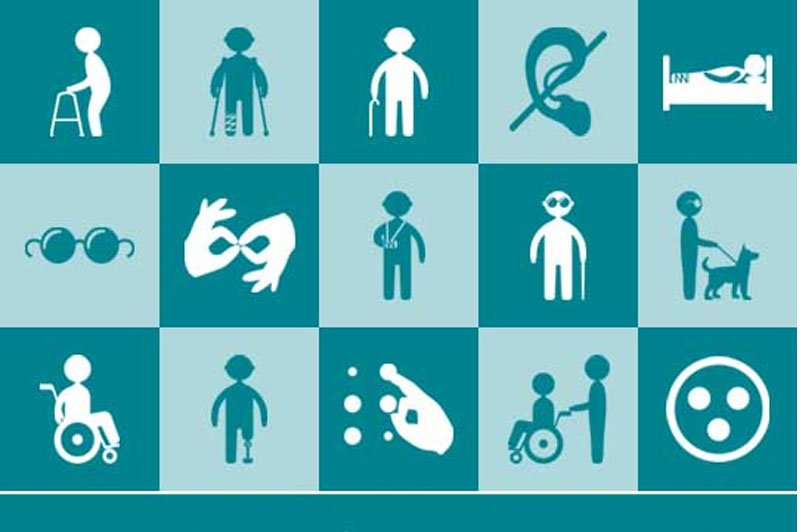Disability Types

A disability is any condition of the body or mind (impairment) that makes it more difficult for the person with the condition to do certain activities (activity limitation) and interact with the world around them (participation restrictions). For the purposes of digital accessibility, three broad areas of disabilities are worthy of note: Sensory disabilities relating to an impairment of one of the five senses, mobility disabilities relating to some impairment of movement or coordination of movement, and cognitive disabilities relating to learning disabilities or impairment of the cognitive process.
The most common sensory disabilities are visual disabilities, ranging from mild visual impairments to total blindness, and auditory disabilities, including being hard-of-hearing or totally deaf. Sensory disabilities can be either congenital, due to an accident, or due to a disease. Given the visual nature of the web and most IT systems, individuals with visual disabilities are often those that are most acutely impacted by inaccessible IT systems. For example, consider a web site that contains charts and graphs representing a complex finding. A blind individual cannot perceive the visual chart image and without an accompanying text description would be unable to access the information in the chart.
Mobility disabilities involve impairment to some axis of motion, lack of fine motor control, or inability to perform synchronous actions. Individuals with paraplegia, quadriplegia or a temporary mobility disability, such as a broken bone in a cast, all demonstrate some form of mobility disability. Accessibility standards that impact individuals with mobility disabilities relate to control placement and keyboard usage. For example, consider a software application that requires the user to press “CTRL” and “C” at the same time as the only means of accessing the “Copy” function. A user with quadriplegia may have a difficult time activating this control chord given the requirement for fine motor control. To provide an accessible alternative, the copy functionality could be added to the main menu structure or right click context menu (or both) for the program.
Cognitive disabilities are a broad category and relate to some form of impaired cognitive functioning. One of the most common cognitive disabilities impacted by digital accessibility is dyslexia. Studies have shown that certain color palettes on web sites, and combinations of foreground and background colors, can be read more easily by individuals with dyslexia, than other color palettes.
